#final fantasy tactics a2: grimoire of the rift
Text
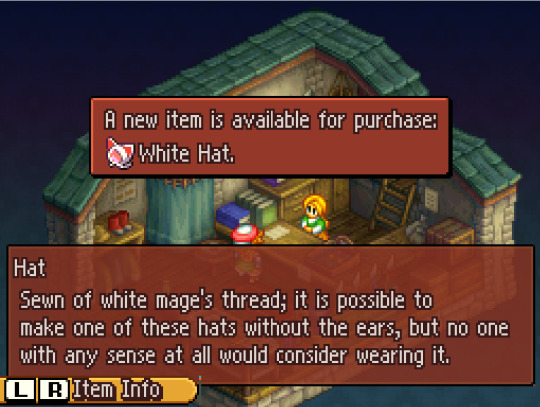
When you're right, you're right.
184 notes
·
View notes
Text
In my current playthrough of FFTA2 I found a ribbon and a ragetsu-denbu in treasure chests and I know it's spoiled me for future playthroughs.
I know 2 ribbons still isn't a lot when you have 6 characters per battle, but it's 100% more ribbon than I think I could normally expect lol.
2 notes
·
View notes
Text
#ivalice#final fantasy xii#final fantasy tactics#ffxii#fft#ffta#ffta2#ff tactics#Ivalice Alliance#Revenant Wings#stormblood#vagrant story#crystal defenders#final fantasy
23 notes
·
View notes
Text
i defeated Fae Tactics

i love how many tactics games need to put "tactics" in their title. imagine that with any other genre.
so theres a genre of indie game i like to call "that ratatouille gif". i have attached it for your convenience
you know what i mean. Bloodstained, Yooka-Laylee, Bomb Rush Cyberfunk, Palworld, its a whole thing. this is a dangerous genre to classify things into, because theres a very thin line between "taking heavy inspiration" and "being a sequel". like, its easy to say that Paradise Killer is a Kill The Past game with that got sent to the wrong address in the morphogenetic field. theres the moon symbolism, the assassins, theres literally a silver case for gods sake. but i cant call it a ripoff because it brings so much unique to the table with the worldbuilding, presentation, and gameplay.
thats how i feel about Fae Tactics. when it first lit that spark, inspiring me to play it for as many hours as i could as many days as i could until i finished it, i felt my childhood. i remember one of the first video games i ever owned: final fantasy tactics a2 grimoire of the rift. i played the ass off of that game, expiring everthing you could do multiple times over. it inspired a lifelong respect for the tactical rpg in my bones, and Fae Tactics scratched an itch ive been feeling for a while
i dont want to give the impression that im nostalgia blind, thats not the case at all. comparing a trpg to final fantasy tactics (even what i consider the worst game in retrospect - man the law mechanic was a pain) is like comparing a fighing game to street fighter. remember that time capcom tried to sue someone who made a fighting game that stole too many mechanics and design elements from street fighter 2. the court said, paraphrased, "sf2 was so influential on the genre that MOST games have street fighter mechanics now. like, platformers with powerups arent ripping off mario, that just how platformers work now." yeah thats what fft did too.
what im saying is, the game takes the fundamentals of the genre as estalished by its best examples, and builds on them in unique and engaging ways. monsters have a random chance of dropping cards, which lets you equip them as summons for the next battle. its great to have more experimental low-stakes party members. instead of focusing all your valuable main character slots on healers if youre going into a heavy damage fight, you can just bring a bunch of water summons to power through it and support your glass cannons until they end the fight pronto. or, you can have a lot of ranged summons that suppliment your tankier party members; or expendable summons to distract enemies while you buff your party. this is a huge strength of any tactical game - letting you stratagize in a way that is functional to your playstyle.
something id like to note is that there are tons of mechanics, but i only felt overwhelmed at the very beginning. by fight, like, three? i was totally in sync with the games tools and how to use em. this is tough. i remember by playthrough of zanki zero, where i got so overwhelmed by shikabane and character relationship gene splicing and the crafting mechanic and the cloning and the aging and the attack windup and those stupid tentacle attacks that i just fizzled out and gave up trying to comprehend stuff (until chapter six, but im getting distracted). i never saw a new mechanic in Fae Tactics that made me think "whats the point? im not doing this". instead, i was always interested in how i can use this new element to enhance my gameplay. its that classic theory of Get To vs. Have to. i never had to do the cooking minigame every time i slept - i got to play a game where i boosted my partys stats.
so how about the story? i think it was pretty good! each continent that you can explore has its own little isolated plot, and while it all connects in the end, i was worried it would fall into the same trap that i felt saints row 2 did. it didnt feel like you had a gang, it felt like you had 3 friends who all did their own thing and you helped. i think this is managed in the most effective yet realistic way - have peony as the center of the communication because its just her personality. shes doing the talking because shes just a friendly person with leadership skills. also like 1/3 of her party cant talk. the only hurdle then is making everyone feel too isolated - i wont lie, there are shades of that, but i think letting the characters relax in the background if they arent immediately relevant to a scene is a good compromise of this. like, your dog chico doesnt always show up in cutscenes unless they have a weapon upgrade or something. thats fine, cuz like, theyre a dog. itd waste everyones time if everyone chimed in every time anything happened. so its not like gat is inexplicably uninterested in the non-ronin gangs, its just that characters are allowed to be offstage if they dont have any lines. it really helps the group feel more cohesive and friendly, and in general it feels less like oure going on mission sidequests waiting for the area to clean and instead youre going on a real ass adventure
also, if i can be candid, matilda is one of the most badass characters ive ever seen. i love how her intro quest brings so much validity to the scrap youve been collecting so far as more than just "upgrade points". it really builds up peonys compassion and heroism when she puts in that much work to save the life of a stranger, and the time limit adds so much urgency while still being very generous, at least to my collectathon playstyle. finally i just love her character conceptually. shes a fairy that esentially rides her own iron lung like a mecha. the fact that shes lowkey the best ranged fighter in the game doesnt hurt.
closing thoughts. i was insane about this game when i first played it. like, i cannot bring myself to play anything else because im so enraptured about this game. im talking "oh yeah i guess i havent had a meal today" at midnight. thats how you know that youve got a very special game. also that i am very autistic.
0 notes
Text
#Gamefemerides
Hace 16 años se lanzó @FinalFantasy Tactics: The War of the Lions. Es un RPG táctico desarrollado y publicado por @squareenixlatam para @playstation_la Portable. El una versión actualizada de Final Fantasy Tactics, originalmente para PS1, que fuera lanzado en 1997.
The War of the Lions es el segundo título en la serie “Ivalice Alliance” de juegos, que suceden en el mundo ficticio de Ivalice. El 1ro siendo Final Fantasy XII: Revenant Wings (secuela de Final Fantasy XII), y el 3ro, Final Fantasy Tactics A2: Grimoire of the RIft (ambos para @nintendolatam DS). Ivalice (en este juego) tiene la tecnología acorde al final del medievo, junto con las típicas magia y habilidades sobrenaturales de Final Fantasy.
#LegionGamerRD #ElGamingnosune #Videojuegos #Gaming #RetroGaming #RetroGamer #CulturaGaming #CulturaGamer #GamingHistory #HistoriaGaming #GamerDominicano #GamingPodcast #Podcast #SquareEnix #FinalFantasy #FinalFantasyTactics #FinalFantasyTacticsWaroftheLions #FFT #FFTWoTL #PlayStation #PlayStationPortable #PSP #PSVita #PSTV #TRPG #SRPG #JRPG #RPG
instagram
0 notes
Text
Fragrant Story - Review
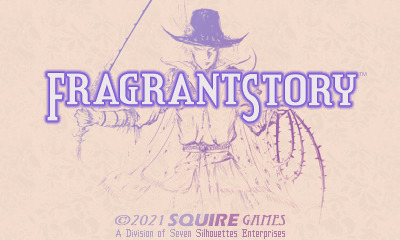
In Spring of last year, Fragrant Story was announced as an unexpected physical release from unknown developer William Kage. Of course, being that this was one of the last 3DS physicals, there was pretty heavy interest from the community. So I like many others picked it up. However soon after it's release, this game was heavily criticized for being without substance, as you could finish it in 15 minutes. And after playing it, I can see why. It's a bare bones tactical RPG that literally only has three levels to the story mode. So those who bought it, felt like it was a collectors bait release. While I won't argue against it, as I and many others definitely wouldn't have picked it up otherwise, I also do feel that it was a passion project created by one man, and is getting unfairly criticized a bit.

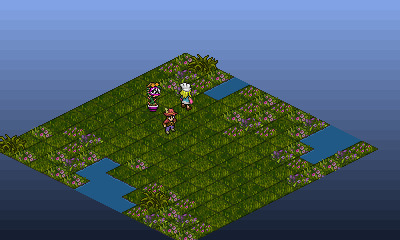
The game's presentation harkens back to the SNES days of Final Fantasy VI, Chrono Trigger, and Secret of Mana. While the pixel art and art direction of the game isn't even close to the levels of those games, I appreciate it for what it is. If you look at the collectors edition of the game, it was heavily inspired by the cover art of Final Fantasy Tactics A2: Grimoire of the Rift. The game despite being only three levels, has voice acting. Something you wouldn't expect for a release of this caliber. Not only that but the VA for the main character Rhubarb, is done by Gideon Emery. He's not a no-name voice actor, as he's lent his voice to a lot of AAA games over the years (Skyrim, World of Warcraft, Destiny 2 etc.) As well, the music was done by Sakimoto Hitoshi (Final Fantasy Tactics, Final Fantasy XII) and Kudo Yoshimi (Elden Ring, Muramasa: The Demon Blade, 13 Sentinels Aegis Rim etc.) So it's not like this game was crafted devoid of love and passion, but because of the nature of 3DS collecting it definitely got more hype than it normally would have.
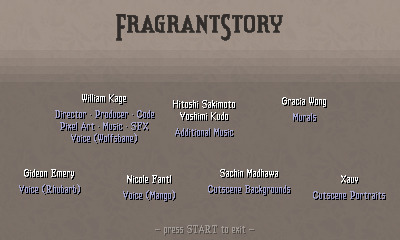
Overall if you want to get the most out of this game you're going to wind up grinding challenges for coins, to purchase all the unlockables. Despite my praise for this passion project, it's definitely not worth the time to replay it over and over again to unlock everything. I don't regret my purchase of this game like some others do. And while I don't think this game is a piece of trash, the only thing keeping it from being unforgettable is because, it was the second to last 3DS release. I most likely will never go back and play this game again, but I also won't part with it, as it an important part of the legacy of the 3DS. One I am happy to have in my collection.
4/10
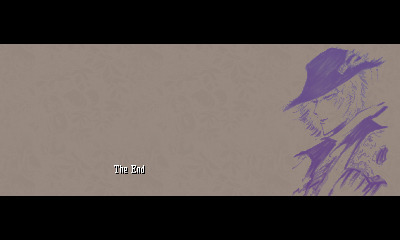
0 notes
Text
Defend your castle 2

Defend your castle 2 upgrade#
Defend your castle 2 series#
"You'd be insane not to give Defend Your Castle a download. The original game of castle defense - accept no imitation! Multiple maps, lots of upgrades, different classes, smooth controls, excellent mechanics, and impressive gameplay are prominent features of the game.Best-selling Nintendo WiiWare hit and Casual Game of the Year nominee. At the start, the player has limited heroes, but he must unlock new heroes by using his points after the progress. The primary purpose of the game is to protect the crystal from monsters. All stages contain 31 waves of enemies that enter the area from the left side and walk along the pathway towards the goal. The core gameplay is the same as traditional tower defense games in which the player places multiple heroes on the given map who try to strop monsters to reach the endpoint.Ĭrystal Defenders has multiple stages, and each one is offering you a top-down perspective to navigate the path.
Defend your castle 2 series#
It features a selection of characters sporting Final Fantasy-based character classes and plays out enjoyable tower defense scenarios against a series of monsters. The game offers a set of two tower-defense video games and uses the setting of Ivalice and designed elements from Final Fantasy Tactics A2: Grimoire of the Rift. Dungeon Defenders 2 also offer key features such as different gameplay mode, new game world, unlock the new defense and power-ups, etc.Ĭrystal Defenders is an Action-Adventure, Tower-Defense, Single-player, and Multiplayer video game by Square Enix.
Defend your castle 2 upgrade#
It also offers a hero customization option that allows the player to create or upgrade character with advanced abilities. All the heroes of the game bring unique abilities, powers, and defense to the battlefield. The most exciting and enjoyable feature of the game is it allows the player to invite another online player to team up and save the Etheria. The game introduces different kinds of foes that come with magical sword spells and lots of other weapons. In this game, the player’s ultimate task is to create a mighty defense to burn, kill, and freeze his enemy creatures who will try to attack his kingdom. Another installment in the series of Dungeon Defenders offers the same storyline with improving graphics and enhanced mechanics, making this game enjoyable. Zombies: Garden Warfare is the best game to play and enjoy.ĭungeon Defenders 2 is a Fantasy-based, Strategy, Tower-Defense, Co-op, Single, and Multiplayer video game developed and published by Trendy Entertainment. With superb mechanics, engaging gameplay, and dynamic sounds, Plants vs. Zombies: Garden Warfare offers core features such as two factions, Detailed Environment, Weapon Skins, Upgrades, Combat and more. Interact with NPCs and complete objectives to earn experience points. The player can customize his character using lots of accessories and clothes. There is a variety of levels that take place in the fantasy world invaded by zombies. The player gets access to other features such as new characters, weapons, skills, clothes, and skins upon leveling up by completing the challenges. Two different factions are fighting against each other such as Plants and Zombies, and the game lets the player select either Plants or Zombies to dive into the game world and explore the world from a third-person perspective. Zombies and represents co-op mode where the player can control zombies as well as plants. It is the third marvelous entry in the series of Plants vs. The game deals with Multiplayer mode developed by PopCap Games and published by Electronic Arts. Zombies: Garden Warfare combines the element of Third-person Shooter, Tower-Defense, and Combat. Zombies include core features such as 14 Classes, more than 100 playable Characters, Longer Fight, up to 50 Levels, Coin Packs, Dynamic Sounds, Addictive Gameplay, Stunning Visuals, Challenging Levels, and more. To make the game more interesting, it includes obstacles like a sunset, creeping fog, a swimming pool, and others. You have limited seeds and greens, so play carefully and stop zombies. You can use Wall-nuts, peashooters, cherry bombs, and others to confuse, slow down, and weaken twenty-six types of zombies before they reach your home’s door. The game consists of various levels, and each level has its playing style. In the game, each level contains five to six lanes, and zombies will only move toward your house alone via only one lane. To stop hordes of zombies, you must place various sorts of fungi and plants, each one has unique defensive and offensive capabilities. In the game, you can assume the role of the protagonist, and your main task is to stop zombies from entering your home and eating your brain. Zombies is an Action, Tower Defense, Single-player, and Multiplayer video game developed and published by PopCap Games.

0 notes
Text
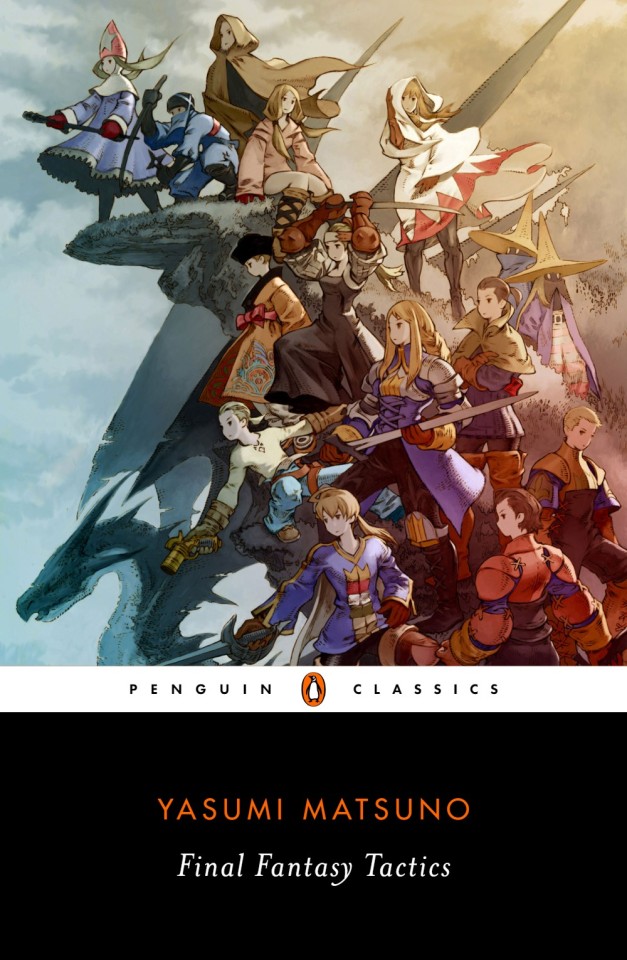
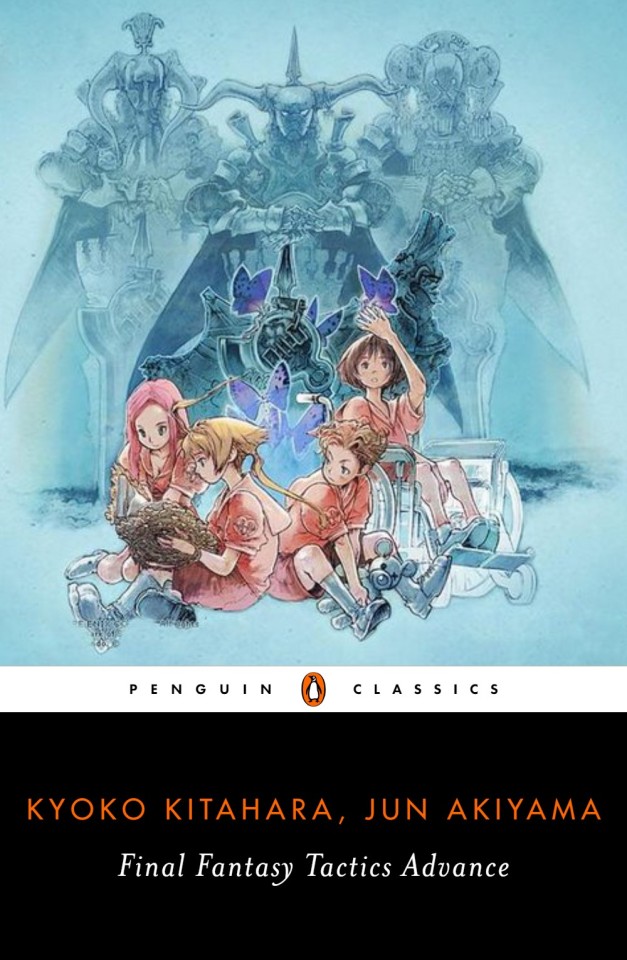
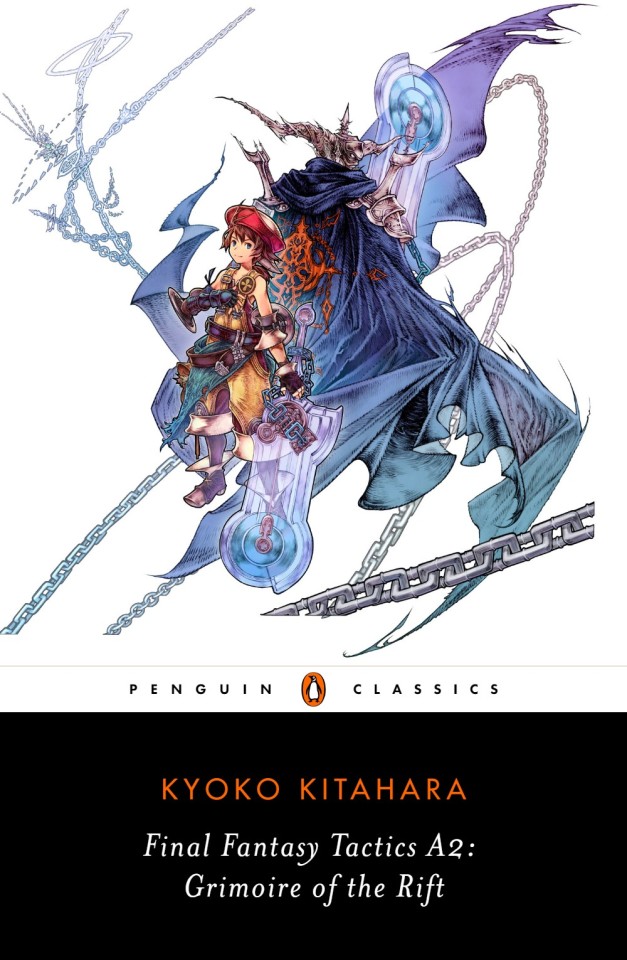
Final Fantasy Games as Penguin Classics: Tactics Edition (as requested by @silencervalkyrie !)
66 notes
·
View notes
Photo

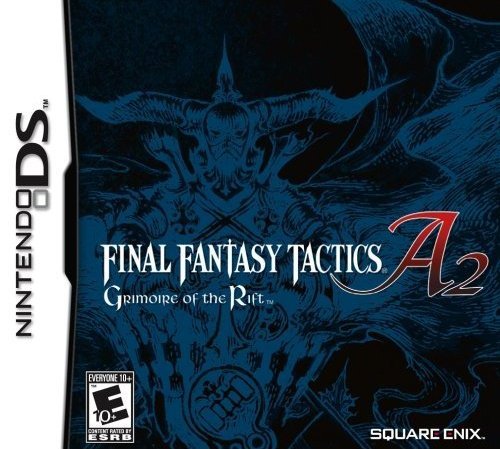

Box art comparison (JP/US/EU): Final Fantasy Tactics A2: Grimoire of the Rift.
40 notes
·
View notes
Text

I would hack gween chocobos into FFT in a heartbeat
they are adorable I love them
31 notes
·
View notes
Text
I used to prefer the elementalist job over the summoner job for viera magic-oriented jobs because of the numerous elemental attacks that elementalist had. But now I'm starting to see that summoner is quite useful because of the large range of their attacks. The ability to cast on 13 squares can be very powerful and at that point the summoner would have had sufficient magic power that even if they can't get a elemental advantage, they can still do significant damage, especially when paired with doublecast.
1 note
·
View note
Text
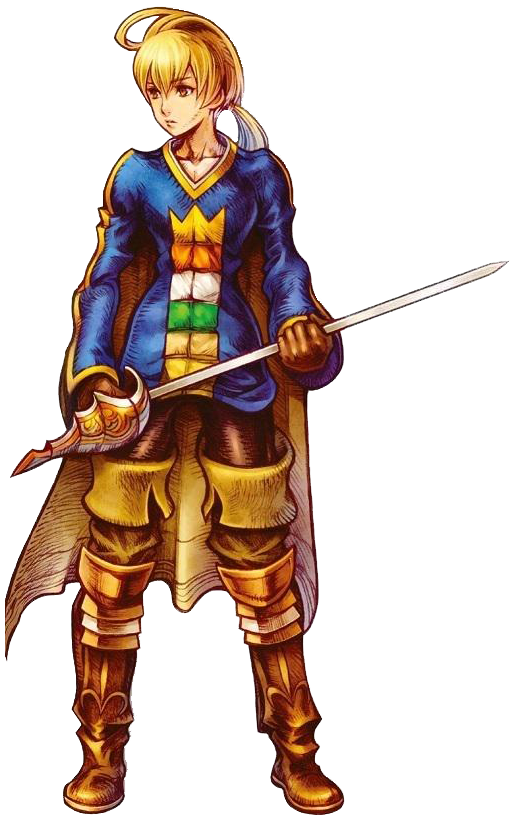

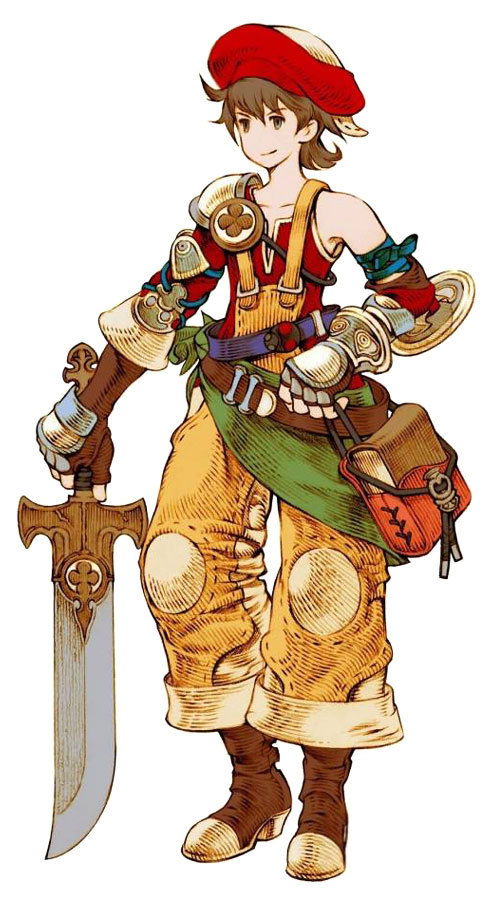

I feel forgetting about this connection.
I don't really know Justin Cowden so well compared to Phil LaMarr. But I felt the need to talk about them anyway.
#phil lamarr#justin cowden#voice actor joke#final fantasy#final fantasy tactics#final fantasy tactics advance#final fantasy tactics a2: grimoire of the rift#final fantasy tactics: war of the lions#dissidia final fantasy#dissidia final fantasy nt#ramza beoulve#luso clemens#kingdom hearts#kingdom hearts iii#hayner#disney#the hunchback of notre dame#phoebus#kingdom hearts dream drop distance#relationship voice actor
20 notes
·
View notes
Text
"Bitch, poison me. See what happens!"
-Me when some fencer in FFTA2 uses swarm strike on one of my clan.
#ffta2#final fantasy tactics and the really long name#final fantasy tactics a2: grimoire of the rift#not d&d#what I have been wasting my time on
5 notes
·
View notes
Video
youtube
FULL EPISODE: Cinematech NE - Raspberyl Wants A Broodwich
Yeah, Seaman got a sequel. Big shock, we know.
#The Pile#G4#Cinematech#Cinematech: Nocturnal Emissions#Street Golfer#Final Fantasy Tactics A2: Grimoire of the Rift#SEGA Bass Fishing#Love Upper!#Gran Turismo 5#Aqua Teen Hunger Force Zombie Ninja Pro-Am#Disgaea 3: Absence of Justice#Valkyria Chronicles#Ontamarama#Zack & Wiki: Quest for Barbaros' Treasure#Wangan Midnight Portable#Dancing with the Stars (game)#Doki Doki Majo Shinpan!#Doraemon Wii#The Legend of Heroes: Trails in the Sky#Seaman 2#Ultraman: Fighting Evolution 3#NIVEA#T-Mobile#I Am Legend#JINX#Kane & Lynch: Dead Men#Guitar Hero III: Legends of Rock#Pirates of the Caribbean: At World's End#iPhone#SiriusXM
1 note
·
View note
Text
#Gamefemerides
Hace 16 años se lanzó @FinalFantasy Tactics: The War of the Lions. Es un RPG táctico desarrollado y publicado por @squareenixlatam para @playstation_la Portable. El una versión actualizada de Final Fantasy Tactics, originalmente para PS1, que fuera lanzado en 1997.
The War of the Lions es el segundo título en la serie “Ivalice Alliance” de juegos, que suceden en el mundo ficticio de Ivalice. El 1ro siendo Final Fantasy XII: Revenant Wings (secuela de Final Fantasy XII), y el 3ro, Final Fantasy Tactics A2: Grimoire of the RIft (ambos para @nintendolatam DS). Ivalice (en este juego) tiene la tecnología acorde al final del medievo, junto con las típicas magia y habilidades sobrenaturales de Final Fantasy.
#LegionGamerRD #ElGamingnosune #Videojuegos #Gaming #RetroGaming #RetroGamer #CulturaGaming #CulturaGamer #GamingHistory #HistoriaGaming #GamerDominicano #GamingPodcast #Podcast #SquareEnix #FinalFantasy #FinalFantasyTactics #FinalFantasyTacticsWaroftheLions #FFT #FFTWoTL #PlayStation #PlayStationPortable #PSP #PSVita #PSTV #TRPG #SRPG #JRPG #RPG
instagram
0 notes
Text
A deep dive into Ogre Saga / Ivalice Alliance continuity
Since I got a lot of comments to the tune of "you know those aren't actually connected, right?" on this Ogre/Ivalice thread, I feel like it's worth revisiting & going into how these titles form a coherent world with actual connections and continuity https://twitter.com/IMGibbon/status/1488962184092606472
So I'm going to attempt to do that, one at a time, in release order, showing how the series has built up its lore and history over the just shy of thirty years(!) it's been ongoing now.
You can find this thread in ridiculously long and image-filled twitter form here: https://twitter.com/IMGibbon/status/1496998485047930922 Tumblr only gives me 10 image slots so I'm going to use them sparingly lol
So anyway, once again, welcome to the Wubbulous World of Yasumi Matsuno.
1993.03 - Ogre Battle: The March of the Black Queen [Super Famicom]

We start with Ogre Battle: The March of the Black Queen, originally released for the Super Famicom in March of 1993, and later receiving ports for the PlayStation and Sega Saturn. These would spruce up the graphics, change up the fonts, & add some voice acting.
Supposedly Episode V in an ongoing saga, started in the middle (as one does when you're inspired by Star Wars). This release actually sets the scene for the next half dozen or so that follow it, even across multiple publishers and development teams, via its characters and lore.
Long long ago, humanity fought a war against Ogres and Demons. Among humanity's champions, the Twelve Disciples of the heavens were gifted sacred Zodiac Stones by the gods and used their power to drive the armies of the Underworld back into their domain and seal them away.
Other artifacts of note from the Ogre Battle are the Holy Grail, gifted to humanity by the heavens; the Black Diamond, a 13th Zodiac Stone created by a banished Disciple; and the Fire Embl-er, the Crest of Fire, held by humanity's champion as they drove back the demonic hordes.
25 years prior to the game's start, Empress Endora conquered the continent of Xetegenia (sometimes spelled with a Z). During her reign, a resistance organization forms to free the continent. The plot opens with the player character Destin taking command of the Liberation Army.
Throughout the course of the campaign, Destin is joined by various other characters, such as Lans Hamilton, a former knight of Xenobia (again, sometimes with a Z); Warren Omon, a mage with the ability to divine the future; Tristan, the rightful prince of Xenobia; and others.
After the Empress is slain, it is discovered that she was manipulated by Rashidi, a dark wizard in the Empress’ employ. Destin defeats him, but before he dies Rashidi releases Diablo, the king of the Underworld who was sealed away after the first great Ogre Battle.
Destin and their army manage to seal Diablo away again before he can become too powerful, using the mythic Zodiac Stones that have been gathered over the course of the campaign. Bringing a close to this first chapter in the burgeoning fantasy universe.
1995.10 - Tactics Ogre: Let Us Cling Together [Super Famicom]

The second release in the series was to be Tactics Ogre: Let Us Cling Together, originally released in October of 1995 for the Super Famicom, it too got ports to the Sega Saturn and Playstation, and again they were mostly effects and performance tweaks.
Episode VII of the ongoing Ogre Battle Saga (yes, they skipped ahead one), this builds on MotBQ's base, featuring a new conflict in a new locale, but featuring returning characters & items from the first game while introducing some new legacies of its own.
Tactics Ogre takes place in Valeria, an archipelago nation united under one King Dolgare. After Dolgare's apparent death with no direct heirs, the three primary ethnic groups of Valeria end up in a brief civil war, dividing into dedicated territories of varying sizes.
The factions are Bacrum-Valeria, backed by the foreign nation of Lodis and ruled by its regent, Bishop Branta Mown; the Galgastani (referred to as the Gargastan Kingdom in some localizations) led by Cardinal Barbatos; and the Walsta People led by Duke Ronway.
After the Galgastani gain the upper hand and declare themselves ruler of Valeria, the neighboring Walsta are subjugated and restricted to a small island. The story opens with a small Walsta resistance group, including main character Denim Powell and his sister Kachua.
They attack a group of roaming Xenobian mercenaries falsely believing their leader Lans Hamilton (returning from MotBQ) is the Black Knight Lans Tartare, a Lodis soldier who imprisoned Denim and Kachua's father Plancy in their childhood.
The sympathetic Hamilton joins the group, bringing the old sage Warren (also returning from the previous game), and the rest of his Xenobian troops, while Kachua vainly attempts to dissuade Denim from fighting.
The game at this point opens up on some branching story paths, an early branch opening up when Denim's loyalty to the resistance is tested when a compatriot orders the massacre of a town that refuses to join them, framing Galgastan for the crime.
Eventually finding their father Plancy dying from a terminal illness, Plancy reveals to Denim that he is of the Mown family (the regents of Bacrum-Valeria), and that Kachua is King Dolgare's illegitimate daughter, giving her a direct claim to Valeria's throne.
Among the Galgastani forces is the necromancer Nybeth Obdilord, who is a whole tier of evil unto himself. Nybeth has his own superdungeon, the Palace of the Dead, on the 100th floor of which can be found one of the game's new mythic artifacts, the mysterious Gran Grimoire.
In all routes, both the Golgastani and Tartare's forces are defeated and Denim kills Branta Mown. Survivors of Tartare's Dark Knights use the stolen Xenobian sword Brunhild to break the seal on a portal leading to the realm of the dark god Asmodeus.
It is revealed that Dolgare, overcome with despair by his wife's death, made a pact with Asmodeus in an attempt to resurrect her, becoming an Ogre in the process. He attempts to reclaim Valeria, but Denim's forces defeat him, Warren sacrificing himself to seal the fiend away.
1997.06 - Final Fantasy Tactics [PlayStation]
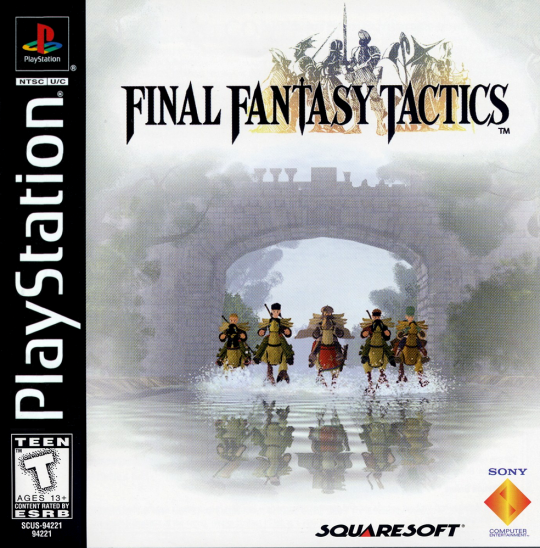
After the completion of Tactics Ogre, Matsuno left Quest for Square, taking with him already-in-progress plans for the next Ogre entry, which would eventually be released on the Sony PlayStation as Final Fantasy Tactics in June of 1997 to cult success.
This title establishes the kingdom/world of Ivalice, which would continue to appear in later titles for the next 25 years or so. While not explicitly the same world as the Ogre games for legal reasons, there are numerous indications to suggest they are one and the same.
A couple thousand years ago in-universe, an undescribed Cataclysm ravaged the world, scouring numerous kingdoms from the map, driving some of the fantasy races to extinction, and eliminating magic as it was then known, leaving humanity to pick up the pieces and rebuild.
Out-of-Universe, this Cataclysm can be read as a bit of a metatextual symbol of Matsuno having to eschew explicit references to his prior Ogre games and start anew with Ivalice, and serves as a nice divide between the two franchises.
Slightly more recently, only 1200 years ago, the saintess Ajora Glabados was born. After her execution, her followers formed the Church of Glabados, integrating the legend of the mythic Zodiac Stones (last seen in MotBQ) & the Braves who wielded them into their holy scriptures.
As the game opens, Ivalice is recovering from a Fifty Year War against neighboring Ordalia. After the death of its ruler, Princess Ovelia and Prince Orinas are the top candidates for the vacant throne.
The former is supported by Prince Goltana of the Black Lion, and the latter by Queen Ruvelia and her brother, Prince Larg of the White Lion. The two groups engage in what would later be known as The War of the Lions.
Ramza, of the noble Beoulve family of knights, and his childhood commoner friend Delita, witness the murder of Delita's sister during an uprising, causing them both to abandon their ties to the nobility.
Ramza joins a mercenary group protecting Princess Ovelia and her guard Agrias from being hunted by both sides of the conflict, while Delita joins Goltana's forces. They are reunited during a kidnapping attempt of Ovelia by Prince Larg forces.
Agrias suggests sheltering Ovelia with the Church of Glabados. Along the way, Ramza meets Mustadio Bunansa, a machinist in possession of one of the thought-lost holy Zodiac Stones, who is also seeking church protection due to those seeking to take the stone for themselves.
Ramza eventually discovers that the Church of Glabados has been using the now corrupted thirteen Zodiac Stones to instigate the War of the Lions. Ramza is branded a heretic and chased by the Knights Templar, the soldiers of the church who are hunting the Zodiac Stones.
He acquires proof of, and tries to reveal, the Church's lies about Saint Ajora - and that she was in fact the mortal host of Ultima the Fallen Angel, leader of the Lucavi, a group of corrupted scions and mythic beings who sought to supplant the gods.
The two sides in the war face off in a major battle that results in the deaths of both Larg and Goltana, securing the Church's control over Ivalice. After the battle Ramza discovers that the Lucavi have been using the Church in an attempt to resurrect Ultima once more.
The War of the Lions was needed to generate the numerous recently slain souls needed for the ceremony, and the mortal host chosen to house Ultima's own soul in this new age is Ramza's younger sister Alma.
Failing to stop the ceremony in time, Ultima is resurrected, though Ramza and his allies succeed in destroying her and escape into obscurity. In the epilogue, Delita marries Ovelia and becomes the King of Ivalice, though the two eventually end up stabbing each other.
Orran Durai, a member of Ramza's party, chronicles the Church's evil plot with the "Durai Report", but is burned at the stake for heresy. 400+ years later his descendent Arazlam Durai finds the report and vows to get the story out, serving as the narrator for the entire game.
1999.07 - Ogre Battle 64: Person of Lordly Caliber [Nintendo 64]
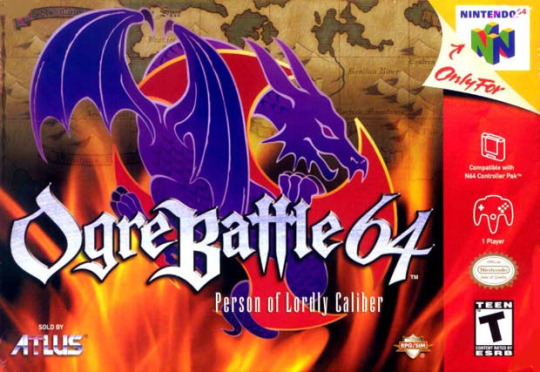
Jumping back over to Quest for a hot minute, several of Matsuno's team stayed behind and continued working on the Ogre Battle series. The next release in the franchise was to be Ogre Battle 64: Person of Lordly Caliber, released in July of 1999 for the Nintendo 64.
Serving as the Saga's previously skipped Episode VI, Person of Lordly Caliber takes place roughly concurrently to the events of Let Us Cling Together, again in a new setting, and again featuring returning characters and items from the original Ogre Battle game.
The story follows Magnus Gallant, a recent graduate of the Ischka Military Academy, and fledgling captain in Palatinus' Southern region, Alba. As civil war erupts in the country, Magnus eventually decides to join the revolution with its leader, Frederick Raskin.
The campaign takes Magnus across the nation, first liberating the southern regions with the aid of Destin and his Xenobian troops (returning from MotBQ), then the other three corners of the map before finally marching on the capital of Latium.
However, along the way Magnus' battalion the Blue Knights find their enemies escalating, including the puppet king of Palatinus, the Holy Lodis Empire (whose forces are also operating in Valeria), & the Dark Hordes of the Netherworld themselves, rearing their heads once again.
Like Tactics Ogre, there are multiple branching story paths and possible endings, but among them all Frederick dies an untimely death. One of the endings suggests that the entire plot was fomented by a returned Rashidi, but unfortunately the storyline has yet to be continued.
2000.02 - Vagrant Story [PlayStation]
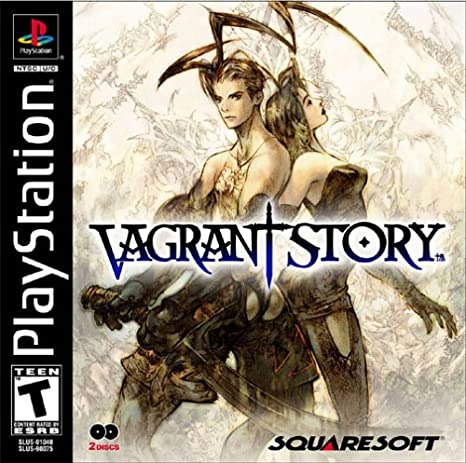
Back on the Square side of things, Matsuno was putting out his next title in February of 2000, the highly experimental hybrid action/turn-based RPG Vagrant Story for the Sony PlayStation, which takes place in the ruined city of Leá Monde in the kingdom of Valendia.
The story centers on Ashley Riot, an elite agent known as a Riskbreaker, and his partner Callo Merlose, an agent of the Inquisitors, who must travel to Leá Monde to investigate the link between a cult leader and a senior Valendian Parliament member, Duke Bardorba.
In the prologue, Ashley is blamed for murdering the duke, and the game discloses the events that happen one week before the murder, with some additional comments and narration by Arazlam Durai (returning from FFT's framing device) commenting on the current events.
Sydney Losstarot, leader of the religious cult Müllenkamp, laid siege to Duke Bardorba's manor in search of a key and kidnapped Bardorba's son, Joshua. Sydney is a practitioner of The Dark, a concept introduced in Final Fantasy Tactics as the source of one evil witch's power.
The Dark as a concept is very central to Vagrant Story as a whole, used to explain the presence of undead in Leá Monde, why they dissolve into black mist upon defeat, the powers of many dark arts wielders therein, and other supernatural phenomena within the game's world.
As Ashley and Callo chase Sydney through Leá Monde, it eventually comes to light that the city, established some two millennia ago, is in fact a construct created from a mythic tome, the Gran Grimoire (last seen in Tactics Ogre).
As machinations unfold between Ashley, Sydney, and others, it comes to light that this has all been an elaborate plot to gain the powers of the Dark, with Ashley unwillingly becoming its new host, marked by the pronged cross known as the "Blood-Sin" by the end of the game.
Beyond things like the Gran Grimoire or Arazlam, the city of Leá Monde also contains the enshrined remains of several dramatis personae from the War of the Lions; such as Ramza's ashes, the gem currently sealing away Ultima, and a balm left behind by Agrias, among others.
These all work to weave a very strong continuity with Final Fantasy Tactics, which were only solidified as time went on via interviews and later releases.
2000.06 - Ogre Battle: The Prince of Xenobia [NeoGeo Pocket Color]
Meanwhile, back at Quest again, the first of two gaiden titles was being released - June of 2000's Ogre Battle: The Prince of Xenobia for the NeoGeo Pocket Color. Unlike prior Ogre titles, this is considered a side story and isn't a numbered "episode" in the ongoing Saga.
Starting prior to the events of March of the Black Queen, this title follows a chunk of the life of Destin's future ally Prince Tristan of Xenobia, with later portions of the game occurring concurrently to MotBQ, but from Tristan's point of view this time.
There's not really a lot to say about this one. It's a fairly faithful port of the Ogre Battle gameplay onto a handheld system, and served more as a proof of concept such things could be done than anything else, though its fleshing out of familiar characters is welcome.
2001.06 - Tactics Ogre: The Knight of Lodis [Game Boy Advance]
Following that up, the team decided to be more ambitious with their next project, and just a year later in June of 2001 released their second prequel side story - Tactics Ogre: The Knight of Lodis for the Game Boy Advance, this time serving as a prequel to Let Us Cling Together.
The storyline follows Lodis soldier Alphonse Loeher as he learns of his country's oppression of the neighboring land of Ovis & eventually turns against his former comrades. As with the prior Tactics Ogre, the game features many choices and branches, allowing for multiple ends.
Though perhaps not immediately apparent at the beginning of the game, by the end the narrative has revealed the background and motivations of the Black Knight Lans Tartare, one of the primary antagonists of Let Us Cling Together.
While being a fairly straightforward Tactics Ogre prequel, this does surprisingly contain some links to Final Fantasy Tactics, in the form of two disguised demons, Lethe & Cirvante, bearing very similar fake names to those they would later use during the War of the Lions.
2003.02 - Final Fantasy Tactics Advance [Game Boy Advance]
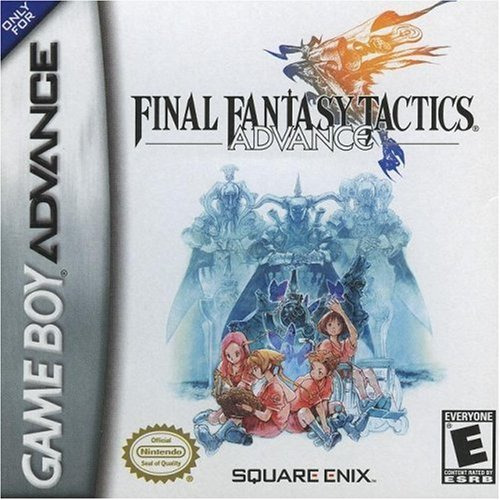
Those that had remained behind at Quest and continued working on the Ogre games were reunited with Matsuno when Quest began shutting down in 2002. Their first title at Square would be Final Fantasy Tactics Advance for the Game Boy Advance, released in February of 2003.
The Ivalice in this title is a facsimile of the real Ivalice created by the Gran Grimoire (last seen doing similar in Vagrant Story), this time acting in a fashion similar to the titular tome in The Never Ending Story, creating an escape from reality for four young children.
Those 4 being Marche Radiuju, a new student & in the modern day town of St. Ivalice; Mewt Randell, a shy boy pining for his late mother; Ritz Malheur, an assertive girl & classmate of theirs; & Doned, Marche's younger, handicapped brother and a big fan of fantasy novels & games.
The game centers on Marche as he tries to find the others and figure out what happened. Even after realizing how much better his life is in the new Ivalice, he believes that none of it is real and is even more determined to return to his home with everyone.
He finds that Mewt is the ruler of the land alongside his mother; his depressed alcoholic father now a respectable leader of the Judges of Ivalice; Ritz is an adventurer of another clan and no longer suffers from albinism; and Doned is now healthy and able to walk.
Eventually Marche succeeds in his quest to return Ivalice to normal. He achieves this by defeating Li-Grim, the physical manifestation of the Grimoire's wish-based magic that had been masquerading as Mewt's mother, Queen Remedi.
He teaches the other children in the process that they cannot live in fantasy but must learn to live with their misfortunes in reality. The other children are wiser from the experience, as the ending reveals them all to have become happy with themselves.
This marks a bit of a new era for Ivalice, both in and out of universe, as the next half-dozen titles center around the pillar that is the then-in-development FFXII, & Tactics Advance was no exception, serving as a bit of a sneak peek for some characters and locales thereof.
We also mostly move out of the realm of ambiguous game connections. Square launched the "Ivalice Alliance" sub-franchise banners around this time to formally denote Ivalice titles that have clear continuity with one another, most of which also feature characters from FFXII.
In Tactics Advance's case, those elements would be Marche's Moogle friend and Clan leader Montblanc; the Judges, the de-facto guardians and enforcers of law & order in Ivalice; and some other odds & ends that end up debuting here early ahead of their intended console introduction.
More general elements include some of the new mainstay races of Ivalice, created for XII, such as the lizard-folk Bangaa, the rabbit-kin Vierra, and the somewhat dog-like Nu Mou, reminiscent of the Mystics from the 1982 film The Dark Crystal.
There were also a number of returning bits from prior games as well, chief among them the Lucavi from FFT, now dubbed "Scions", serving as this game's summons. The Scions are 24 mythic beings split into the forces of The Light & Dark. The Lucavi being of The Dark, natch.
2006.03 - Final Fantasy XII [PlayStation 2]

Ending up being Matsuno's final project at Square for some years, Final Fantasy XII suffered a troubled production, Matsuno leaving Square for various reasons partway through development, being released in a state the team wasn't entirely satisfied with in March of 2006.
The team would finally "complete" development a year later with an "International" version that implements sweeping balance tweaks, a job system, an optional super-dungeon, expanded quality of life options, and other changes, though nothing pertinent to lore or continuity.
That Japan-only International release would later be brought to the states with a remaster subtitled "The Zodiac Age" in 2017.
As discussed above, Final Fantasy XII was a new tentpole for the Ivalice subseries. While not deriving explicitly from anything from past titles like FFT stemmed from MotBQ, it still calls back and explicitly lays out where it sits with regards to Ivalice's history and setting.
Prior to the thrust of the plot, the kingdom of Dalmasca is invaded by the Archadian Empire, assassinating the king, announcing that the culprit was Dalmascan captain Basch, and proclaiming that the Dalmascan Princess Ashe has committed suicide.
Two years later, street urchin Vaan sneaks into the palace a powerful magical crystal, a magicite. He is discovered by Balthier Bunansa and Fran, a pair of sky pirates also looking for the magicite. The three are captured by Archadian forces & meet Basch, still imprisoned.
Basch reveals that his twin brother Judge Magister Gabranth was the one to kill the king. The four escape and discover Vaan's childhood friend Penelo has been kidnapped. After her rescue, the party is captured & encounters the not-dead Princess Ashe, now leading the Resistance.
As you may have noticed, the plot has many parallels to Star Wars, with Vaan as Luke, Basch as Obi-Wan, Gabranth as Vader, Balthier as Han, Fran as sexy Chewbacca, and Ashe as Leia. It's not a secret that Matsuno draws influence from the films, but this is a bit on the nose lol.
The magicite is revealed to be a royal Dalmascan artifact, "deifacted nethicite", and is retrieved from the heroes. The party escapes, but Ashe needs the nethicite as proof that she is the princess, so they journey to collect another nethicite relic, the Dawn Shard.
The crew eventually meet the makers of nethicite, the immortal Occuria (who "pull the strings of history") who give Ashe a mythic blade to cut new nethicite from the fabled Sun-cryst. She also learns that the Occuria Venat has been the one manipulating Archadia from the shadows.
Ashe decides not to take her revenge by following the Occuria's wishes, but instead destroy the Sun-cryst. Gabranth is defeated, and the party infiltrate Archadia's sky fortress and have an epic battle with the Emperor and Vanet, ending the war.
Ashe formally becomes the Queen of Dalmasca; Basch replaces his brother Gabranth as the chief Judge Magister; and Vaan and Penelo fly an airship to meet Balthier and Fran for another adventure. You can almost hear the Star Wars ending credits fanfare playing.
So, let's address this first: The Ultimania Omega's timeline is wrong. I legitimately believe it to be innocuous human error, but it lists an incorrect date, which has resulted in the internet thinking that XII precedes FFT for the last dozen or so years.
In-game, Final Fantasy XII contains a lore entry that describes the Kiltian religion being founded "two millennia" ago and that the Glabados denomination thereof was founded "several decades" later, shortly after Ajora's death. FFT puts the foundation of Glabados at "1200 years ago", placing it around 800 years before XII.
However, the Ultimania Omega instead says that the Glabados denomination was founded several decades after Final Fantasy XII, which completely mucks things up, and would require there being two different Saint Ajoras several thousand years apart.
This discrepancy is often attributed by fans to a mislocalization in either XII or FFT, but after much time spent scouring the Japanese scripts across all releases, I don't actually think there's any mistranslations going on, I think the Ultimania Omega just made a mistake.
If the Ultimania is taken as writ, it makes the relevant FFXII lore entry the only one in the game that is presented non-diegetically, referring to events that occur after the game, & contradicts other lore in both FFT & XII that has stayed consistent across multiple versions.
On top of all that, in an interview with the Final Fantasy XII team at time of release they specifically stated it takes place AFTER Tactics https://www.gamespot.com/articles/tgs-06-final-fantasy-xii-qanda/1100-6158485/
So, in summary, Final Fantasy XII takes place roughly 800 years after Final Fantasy Tactics, give or take. And also, by extension, around 400 years after Vagrant Story.
With that out of the way, Final Fantasy XII also contains several other callbacks and continuity nods to Final Fantasy Tactics and Vagrant Story, and a surprising amount to the latter in particular.
Calling back to Final Fantasy Tactics, we get some more info on the Scions/Lucavi, stating that those of the Dark rebelled against the Occuria and their manipulation of the world's history, and were cast from grace for their troubles.
The Blood-Sin makes a return showing up during some spellcasting sequences, as well as appearing on the servant of one of the Lucavi during its summoning cinematic. Also from Vagrant Story, the Kingdom of Valendia returns as one of Final Fantasy XII's settings.
Several enemies also make explicit reference to Leá Monde, the Dark, and various miscellany from Vagrant Story and Final Fantasy Tactics in general, such as the Entite line of elementals, the Vagrant Soul, as well as some unique enemies that return from the prior title.
Additionally, two of the new Ivalice races created for this game, the reptilian Bangaa and the porcine Seeq, and aesthetically very similar to the Lizardmen and Orc tribes that populated ruined Leá Monde in Vagrant Story.
2007.05 - Final Fantasy Tactics: The War of the Lions [PlayStation Portable]
A remake of the original FFT released for the PlayStation Portable, Final Fantasy Tactics: The War of the Lions was released in May of 2007. An amazing upgrade, it featured an updated localization to be more in line with releases that have since come, redone cutscenes, and more.
Among that "and more" was some new side-content that connects to recent releases, both past and future. Luso Clemens of the upcoming Tactics A2 makes a guest appearance having been magicked into the past by the Gran Grimoire, as it is wont to do.
Another wayward travel in time is Balthier, from Final Fantasy XII, who has been transposed from the events of the upcoming Revenant Wings, and gets caught up in his ancestor Mustadio's adventures with Ramza & Co before ultimately being returned to his proper time and place.
2007.06 - Final Fantasy XII: Revenant Wings [Nintendo DS]

Releasing in June of 2007 for the Nintendo DS, Final Fantasy XII: Revenant Wings is explicitly set a year after the events of Final Fantasy XII, featuring Vaan, Penelo, Balthier, and Fran as an innocuous sky pirate treasure hunt turns into something more.
Exploring the Glabados Ruins (further supporting XII's time placement), they find an ancient airship that takes them to the lost Sky Continent of Lemurés, & learn that the Aegyl (winged folk akin to those from the Ogre games) were not lost to the Cataclysm as previously thought.
Incidentally, the Glabados Ruins are where Balthier was spirited away to the past of The War of the Lions, from which he apparently brought back the sacred Zodiac Stones, as they can be seen sitting in the corner of the upper screen map table during missions.
Vaan's group are not the only sky pirates journeying to Lemurés, as others have been hired by the mysterious Judge of Wings to assault the continent and the Aegyl who live on it, seeking to plunder their crystal reserves and massive auralith crystals.
These massive auraliths are what the ancient Occuria carved the mythic Zodiac Stones and other auracite from, and serve as the power source that keeps the massive continent suspended in the clouds and allow the Aegyl to survive in the ruins of their lost civilization.
The party eventually learn that the Judge of Wings is Mydia, a mixed-race vierra descended from the aegyl Feolthanos, who has used the power of the auraliths to drain the souls of the other aegyl to become immortal after rebelling against the Occuria thousands of years ago.
After freeing Mydia from her ancestor's control, it is revealed that Feolthanos was driven to this madness by a curse, punishment for using the auraliths to raise the continent of Lemurés to the skies in order to save his people from the Cataclysm against the Occuria's wishes.
After his defeat, the continent begins to break up and fall back to the lands below, and the sky pirates evacuate the survivors while they decide to regroup and make a new life amongst the races of the surface.
This is a pretty straightforward sequel to FFXII, but contains some surprising callbacks to Final Fantasy Tactics, with the Glabados Ruins and the Zodiac Stones; as well as the Ogre games, with an entire game's plot revolving around what happened to the winged folk race.
2007.10 - Final Fantasy Tactics A2: Grimoire of the Rift [Nintendo DS]
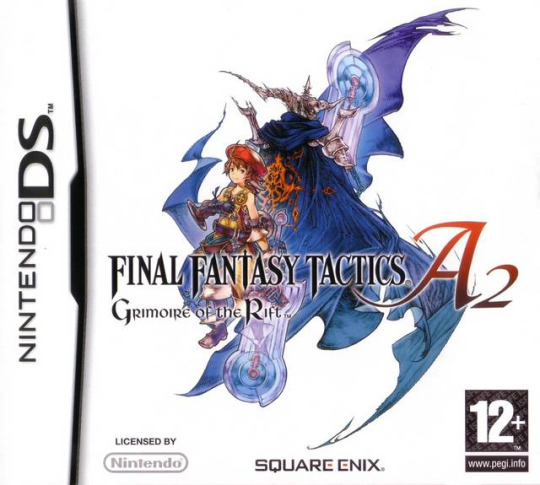
A follow-up to the handheld team's 2001 release Tactics Advance, Final Fantasy Tactics A2: Grimoire of the Rift was released for the Nintendo DS in October of 2007 (truly a big year for Ivalice releases) and stars Luso Clemens, who had made an preview appearance in WotL.
On the eve of summer break, Luso is forced to serve detention helping in the school library. Finding the Gran Grimoire & writing his name in it as a prank, Luso is spirited into the distant past of Ivalice, where he is rescued from a monster by the adventurer clan Gully.
Luso explains his circumstances to their leader Cid, who vows to return Luso to his home; Luso also offers to help the Clan during quests. During their time taking on quests, Luso meets the human thief Adelle & the moogle minstrel Hurdy, and the trio become fast friends.
Eventually, Luso is introduced to the mage Lezaford, who reveals that the grimoire Luso still carries can take him back to his world, but that Luso will need to figure out how on his own.
Going on a journey to discover more, Clan Gully faces off against the criminal group Khamja & the hand of a monster which emerges from a mysterious portal. During the skirmish, Khamja member Illua spies Luso's tome and attacks it, but it deflects her attempt & drives her off.
Lezaford then identifies the Gran Grimoire as the "Grimoire of the Rift", having the power to, among other things, open portals across time and space. It is consequently highly sought after in magic circles and also considered highly dangerous.
The monstrous hand Clan Gully fought off belongs to a beast called the Neukhia, which could be summoned into Ivalice using the Grimoire. Illua wishes to harness powers beyond the portals for personal reasons and seeks the Grimoire's destruction.
After much adventuring, during a final confrontation with Illua, a portal is opened and the Neukhia fully emerges, killing Illua before attacking the party. Luso's party defeats the Neukhia, and feels able to go home after bidding farewell to Clan Gully.
Arriving back in the library, Luso encounters the school librarian - one Mr. Mewt Randell, last seen in Final Fantasy Tactics Advance. Believing Luso's tale, Randell allows Luso to go home to enjoy the summer, while back in the past his friends continue on their adventures.
Aside from Mewt, other returning characters from the series include Vaan and Penelo, looking a bit older & having established themselves as seasoned sky pirates in the "ensuing years" since the events of Final Fantasy XII. Also showing up is Hurdy's older brother Montblanc.
2010.11 - Tactics Ogre: Wheel of Fate [PlayStation Portable]
In the vein of The War of the Lions, Tactics Ogre: Wheel of Fate is an enhanced & expanded remake of Let Us Cling Together released for the PlayStation Portable in October of 2007. Like WotL, it features enhanced graphics, a refined localization, and new content.
Amongst the new content, which includes many new characters and missions, are some sly references that help tie the game to Final Fantasy Tactics and Ivalice, both revolving around the popular character of Count Cidolfus "Thunder God" Orlandeau, Orran Durai's step-father.
A similarly powerful character in Tactics Ogre, Arycelle Dania's, has a new moniker in Wheel of Fate, "Thunder Maiden", which evocative of Cid's title in The War of the Lions, though this isn't a continuity item and more of a nod.
More concrete though is that it is now mentioned in Warren's character reports that Leundar Balbatos's puppet lord and figurehead leader of the Galgastani hails from the Orlandeau family, cementing him as part of Cidolfus' bloodline and distant relative of Orran and Arazlam.
Another fun non-continuity nod is the entirely new character of Ravness Loxaerion of the Knights of Almorica, who is based on Agrias Oaks from Final Fantasy Tactics. Their character sprites are nearly identical.
2012.11 - Crimson Shroud [Nintendo 3DS]

Despite briefly returning to work with Square on Wheel of Fate, Matsuno would go on to make his next title at Level-5 as part of their Guild series of smaller game releases. This materialized in the form of Crimson Shroud, released for the Nintendo 3DS in November of 2012.
The plot of Crimson Shroud centers around the Chaser Giauque (pronounced "Jack") and his party being dispatched by an Earl to the ruins of the Sun-Gilt Palace of the Rahab to track down a fugitive in possession of The Defense of Heresy, a manuscript banned by the Church.
The wider setting of the game is very much in line with past titles, detailing that there was a time in the distant past when magic disappeared from the world, but then returned anew by way of the Gifts, relics granted to humanity by the gods.
The Gifts grant magic to the world, and humanity gradually learned to copy them, and copy the copies, and so on, to the point that magic is once again somewhat common-place, if not as powerful as the abilities granted by the genuine Gifts themselves.
The Defense of Heresy was written some three hundred years back and argued, convincingly, that the gifts were sent by the Devil, not God. The author was executed, and the manuscript expunged, save for a single copy, which has now been absconded with to the Palace of Rahab.
The Palace of Rahab in particular, due to it supposedly being the location of The Crimson Shroud, the original and most powerful Gift. Thus, Giauque has been tasked with not only recovering the manuscript, but ascertaining whether the Shroud is indeed within.
While not immediately apparent that this is related to Matsuno's shared universe, there ARE some things here and there, like a shared concept of The Dark and the history of the loss and resurgence of magic jiving with accounts of the Cataclysm from Final Fantasy Tactics.
But wait, there's more! In 2020 Matsuno replied to a fan on twitter by tweeting out some early concepts for the never-materialized Vagrant Story 2, which coincidentally line up with a lot of stuff from Crimson Shroud. https://twitter.com/hiansphere/status/1252981698268028930
The plot of Vagrant Story 2 would have centered around the Tracker "Jack", revealed to be Callo's son, as he is sent on a mission by the now grown Duke Joshua Bardorba to track down some unspecified person or relic. Pretty similar to what we wound up with, yeh?
Unfortunately, Crimson Shroud marks the thus far final standalone release in the series, and is soon to become increasingly harder to play due to the 3DS eshop shutting down next year. A physical release as part of the Guild01 collection is only in Japanese as well.
In Closing…
And yeah, that's about it. That's the (million or so) tweets. Not really going to get into Final Fantasy XIV stuff here. It's fun, but its connections are self-evident and also explicitly its own continuity for the most part so not really relevant to this treatise.
I hope this deeper dive serves as a good summary of the Ogre/Ivalice releases as well as serving as an educational guide on how all these titles link together that can be cross-referenced with my previous timeline thread. https://twitter.com/IMGibbon/status/1488962184092606472
#final fantasy tactics#final fantasy tactics advance#final fantasy xii#the zodiac age#final fantasy tactics a2#ogre battle#fft#march of the black queen#let us cling together#knight of lodis#grimoire of the rift#crimson shroud#final fantasy series#ogre battle saga#matsuno#nintendo#square enix#quest#ramza#agrias#delita#destin#people were wrong on the internet
75 notes
·
View notes